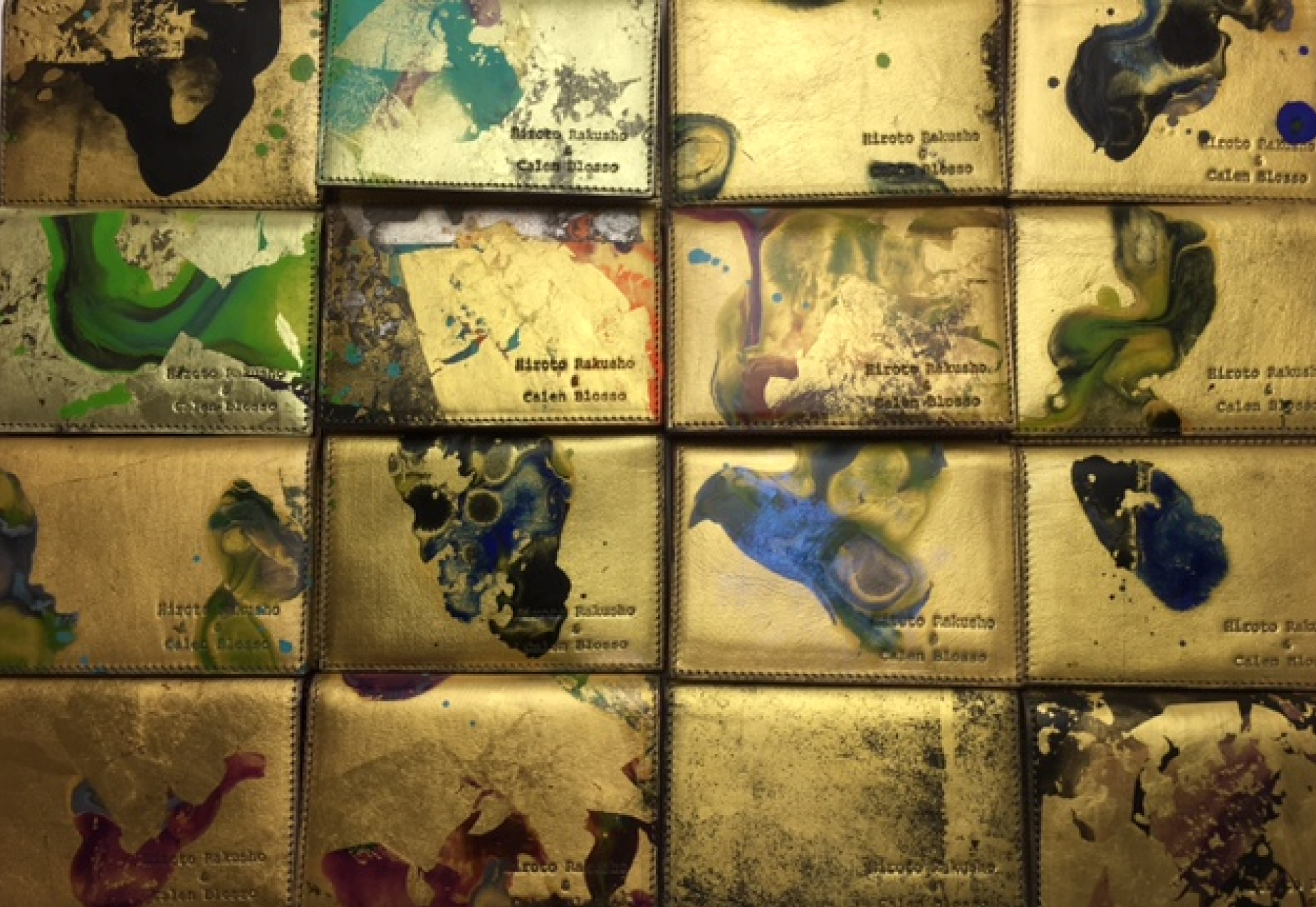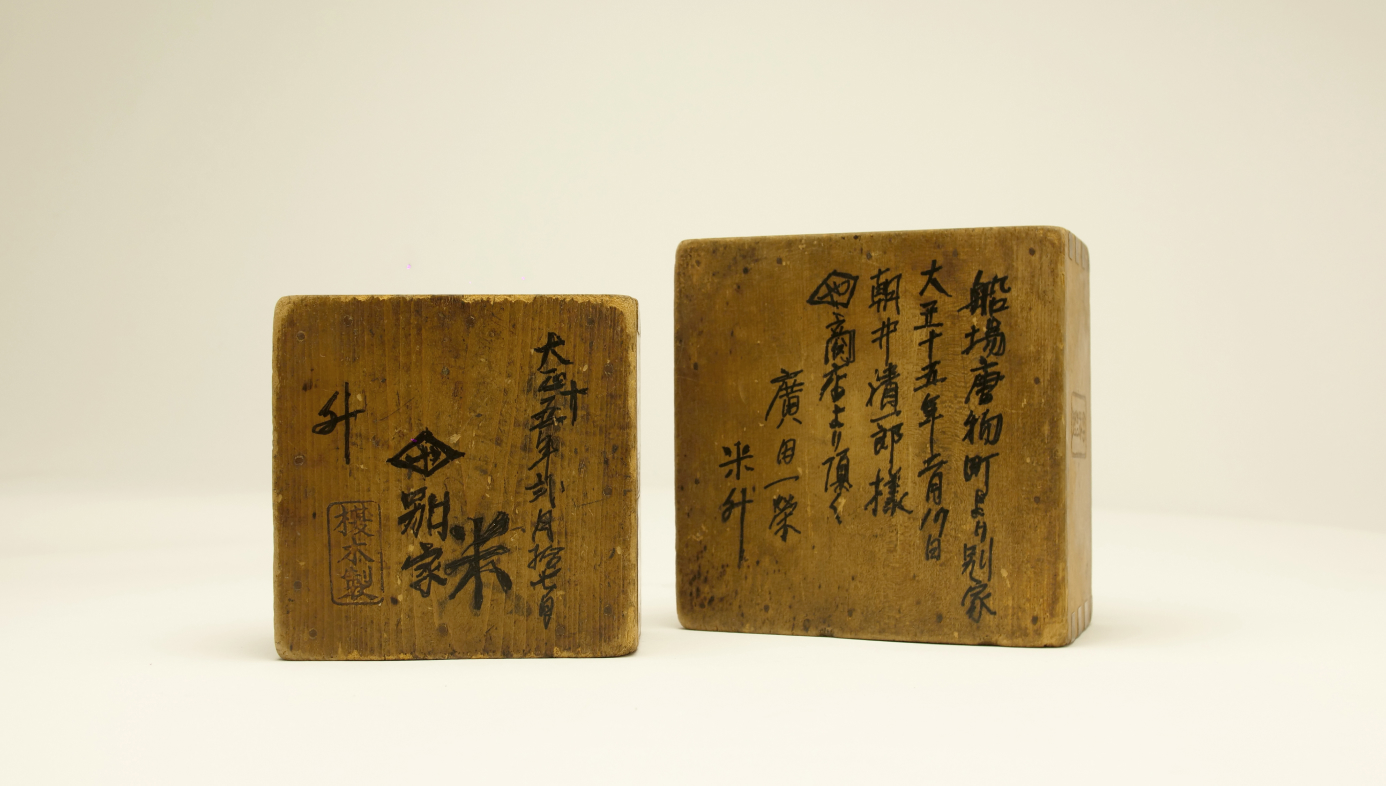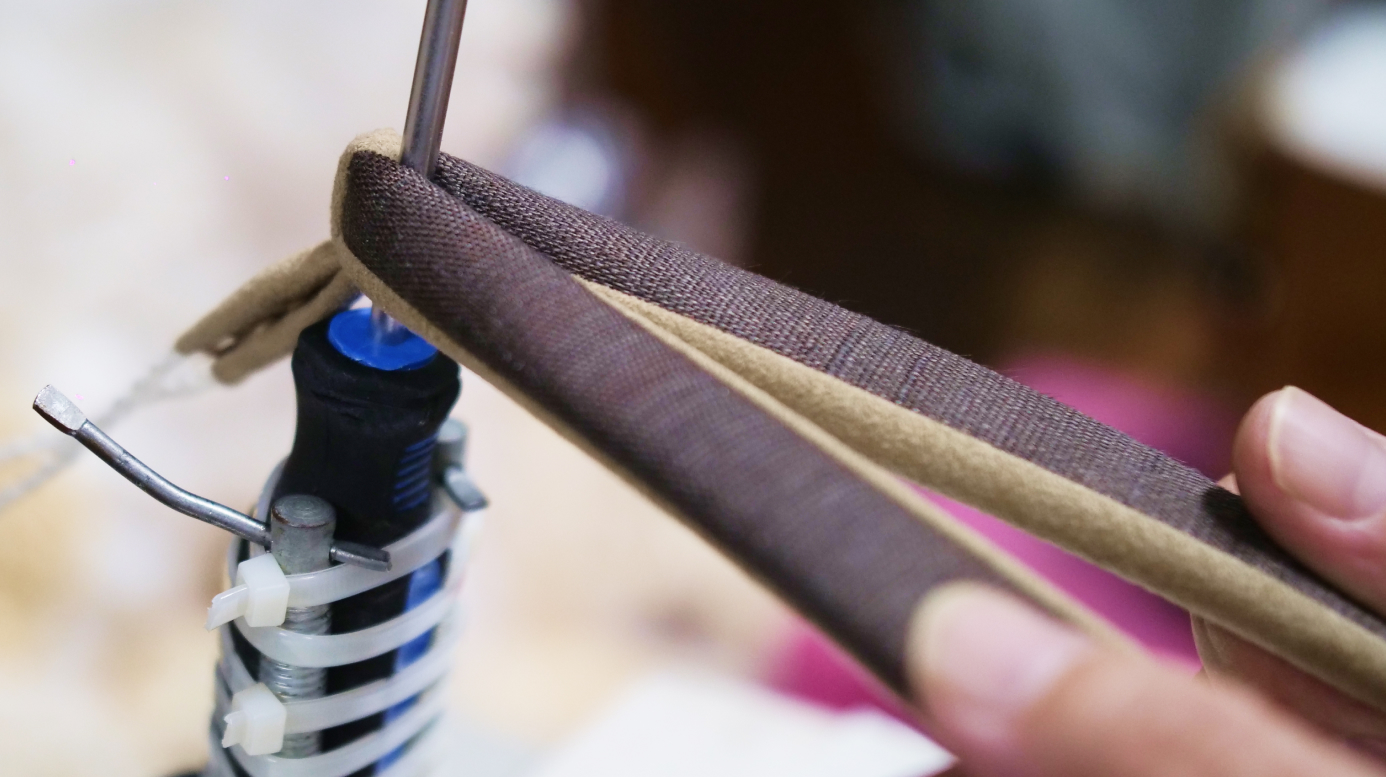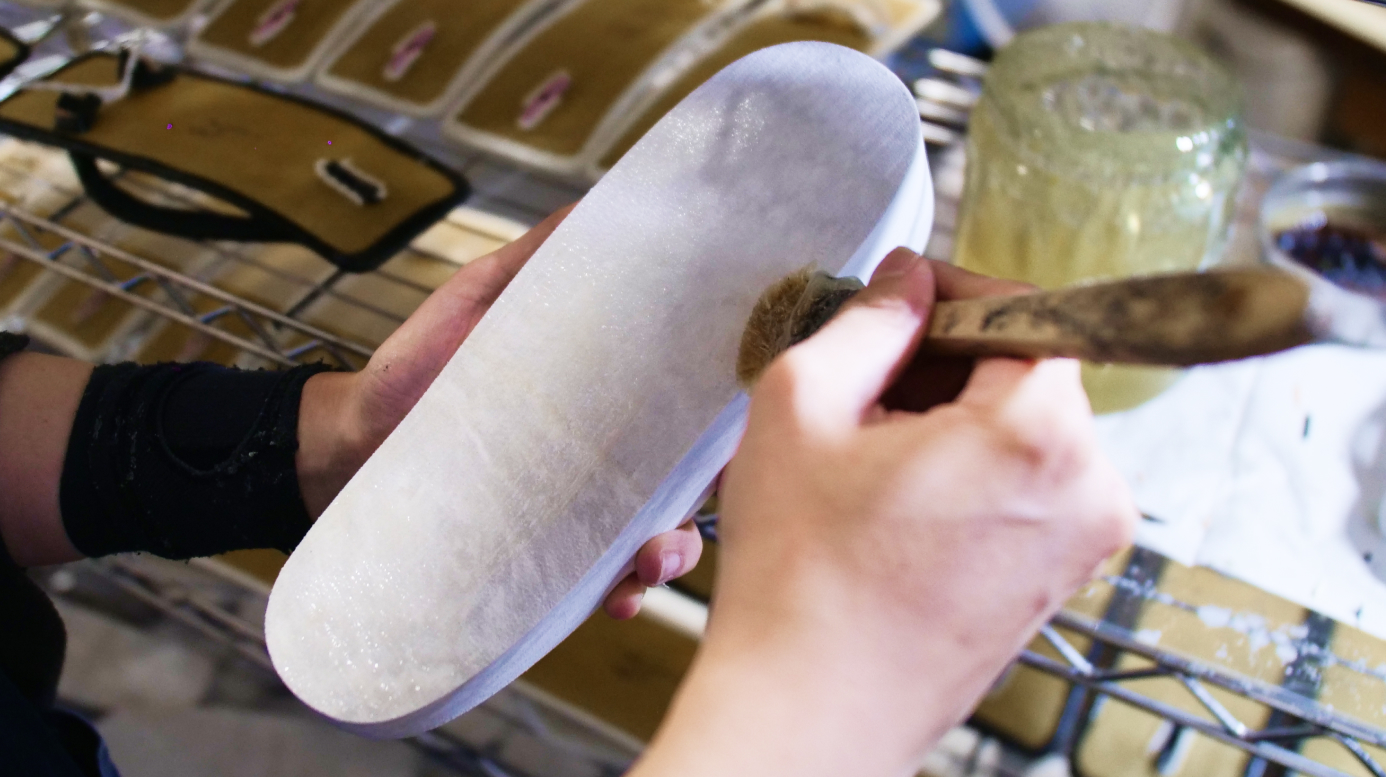Ichiei Hirota, the grandfather of current successor, once served as an apprentice in Hishoya located in Osaka's Karahimachi after coming from Fukui. Hishiya was a drapery store that specialized in thick fabrics. In 1926 (Taisho 15), he was appointed to head a new initiative in the small goods sector, marking a form of business expansion, often referred to in Japan as "noren-wake" (splitting the shop curtain). After establishing this independent branch, under Ichiei Hirota's leadership, the business seemed to focus solely on geta sandal thongs (himo). By 1972 (Showa 47), the mantle was passed to the next generation, Yoshihide Hirota. Yoshihide expanded the business beyond just geta thongs. He ventured into crafting the base of traditional sandals (zori) and designing Japanese-style bags with metal clasps. His innovative spirit also led him to develop new materials, notably the zebra pattern, which became synonymous with Calen Blosso, and Hishiya's premium material called "Yoroi-ori." Entering the business in 1998 (Heisei 8) was Hiroyuki Hirota. He introduced the brand Calen Blosso, diversifying the product line with bags tailored for both Western and traditional Japanese attire. A noteworthy innovation was the introduction of the Cafe Zori series, where EVA material was utilized as an alternative to the traditional cork core in the construction of zori sandals.

















